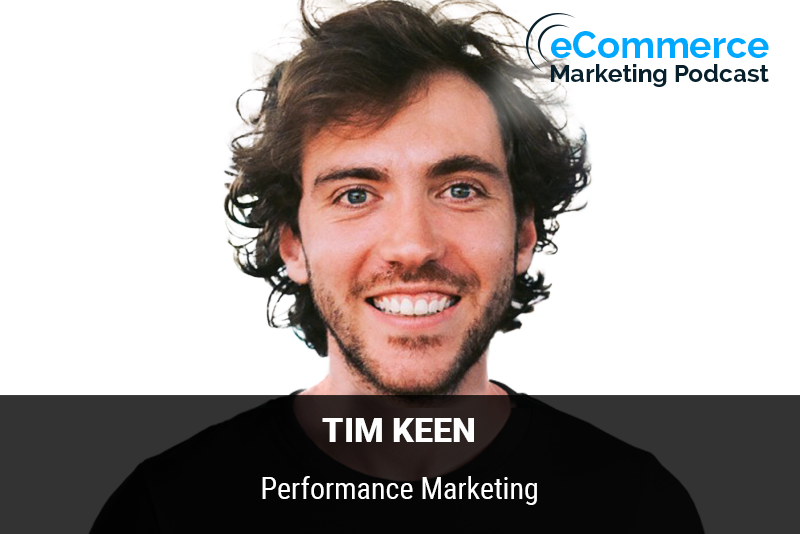
The eCommerce Marketing Podcast walks you through everything that goes into ecommerce marketing — from inbound marketing to paid advertising to conversions. Learn the strategies top marketing experts use to grow their businesses.
Marketing Strategies Revealed in this Episode:
- What is performance marketing and how do you build a process to drive growth
- What tools can be used to help manage performance marketing
- Key performance indicators to monitor and measure effectiveness
- Businesses that have been successful with their performance marketing

Episode Title: Performance Marketing with Tim Keen
Host: Arlen Robinson
Guest: Tim Keen, Co-founder of the Loop Club
Summary: In this episode of the Ecommerce Marketing Podcast, host Arlen Robinson interviews Tim Keen, Co-founder of the Loop Club. Tim shares his journey from being a self-taught digital marketer to co-founding a successful marketing agency. The discussion focuses on performance marketing, defining it, and providing actionable steps to build processes that drive growth in ecommerce businesses. Tim emphasizes the importance of data-driven decisions, the right tools for performance marketing, and best practices for email marketing.
Key Takeaways:
- Introduction and Background [00:00]
- Tim Keen’s journey from a touring rock band to digital marketing.
- Self-taught skills in marketing, starting with limited resources.
- Defining Performance Marketing [07:00]
- Measuring real-time results and adjusting strategies accordingly.
- Difference between traditional marketing budgets and performance marketing.
- Building a Growth Process [11:00]
- Identifying opportunities for customer acquisition at a tolerable cost.
- Optimizing ad creative and tracking system performance.
- Tools for Performance Marketing [18:00]
- Importance of simplicity and key tools like Klaviyo for email marketing.
- Centralizing customer data to measure and optimize marketing efforts.
- Email Marketing Best Practices [25:00]
- Segmenting email lists to improve engagement and deliverability.
- Setting up automated email flows for better customer engagement.
- Key Performance Indicators (KPIs) [30:00]
- Revenue, cost per acquisition (CPA), and media efficiency ratio (MER).
- Using these KPIs to make informed marketing decisions.
- Success Stories in Performance Marketing [35:00]
- Example of grassroots co-op growing significantly through performance marketing.
- Importance of running a process that improves over time.
Guest Info:
For more insights and to connect with Tim Keen, visit Loop Club.











